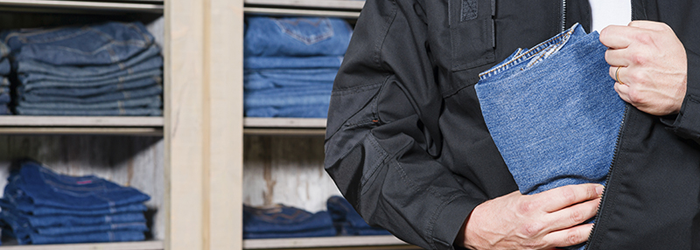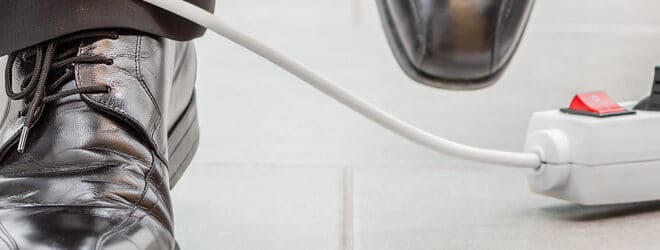Theft is a major problem for small businesses, but while it tops the list of threats, it also happens to be one of the most preventable hazards. Small business risks are everywhere, and you need to stay one step ahead — are you doing enough to protect your company? Here are some tips to keep your assets and inventory safe from sticky fingers.
Are your employees taking advantage of your vulnerabilities? Consider these 10 tips to prevent employee theft from decimating your bottom line.
Retail theft is a $5 billion problem in Canada. Thieves tend to target items that are transportable, in demand, and easily sold for cash — think alcohol, power tools, ATVs, cigarettes, truck tires…the list goes on. Fortunately, a little foresight and planning can can go far to building a loss prevention strategy to protect your stock, and you likely don’t even need to invest in high-tech security to see good results.
Three steps to help you build a theft prevention strategy
Loss prevention can take different forms for different businesses, but the name of the game is to make it difficult or unappealing for thieves to try and steal your goods. There are three general points to consider when addressing your risk and choosing a solution:
- Review all your stock to establish the items thieves might target. Consider the value and general appeal of your inventory, but also how easy it may be to get away with swiping an item or two. Once you know which items are likely attracting undue attention, you can work to rearrange your stock in your favour.
- Identify the techniques thieves may use to steal your goods. Would criminals tend to “smash and grab” or cut your locks to get at your wares? Is your alarm system less effective than you might imagine? Maybe your shop is more inclined to crimes of opportunity — are your employees on the floor keeping a trained eye on things?
- Figure out how to best prevent the theft. There are many theft prevention strategies, and not all are created equal. Match the solution to the problem for a more effective defense (and a better use of your money).
The third item is the crux: it can depend on the type of stock, the techniques identified in step two, and your current theft protection strategies. Once you have a better idea of your particular risk, you can consider all the loss prevention strategies at your fingertips.
Good strategies to deter retail theft
Sometimes, “aggressive hospitality” is the best way forward: being extra attentive and forthcoming in your customer service might be enough to deter some casual would-be-thieves just looking for an easy target. In other cases, putting tangible security measures in place may be a better strategy. Here are some common and clever ways to bolster your building security:
- Prevent smash and grabs by keeping items away from windows and doors.
- Don’t keep too much merchandise in your sales area.
- Secure stock with locks, chains, and closed loop alarm cables.
- Keep stock in a secure, indoor location overnight.
- Install monitored burglar alarms with motion sensors, glass breakage sensors, and door contacts.
- Install closed circuit television (CCTV) cameras.
- Install fog security.
- Alarm your fence compounds.
- Keep some lights on overnight.
- Install exterior lighting.
- Install security bars or security film on windows
In many cases, you can use more than one security measure easily and without much investment in specialized equipment. Think about how many theft prevention strategies you could incorporate in your space — the better you prepare now, the better your chances of avoiding a costly merchandise loss.
However, your efforts aren’t a guarantee, and if you fall victim to theft despite your best efforts, you’ll want a safety net to keep your business going. The right small business insurance can make sure the thieves don’t devastate the business you’ve worked so hard to build.




